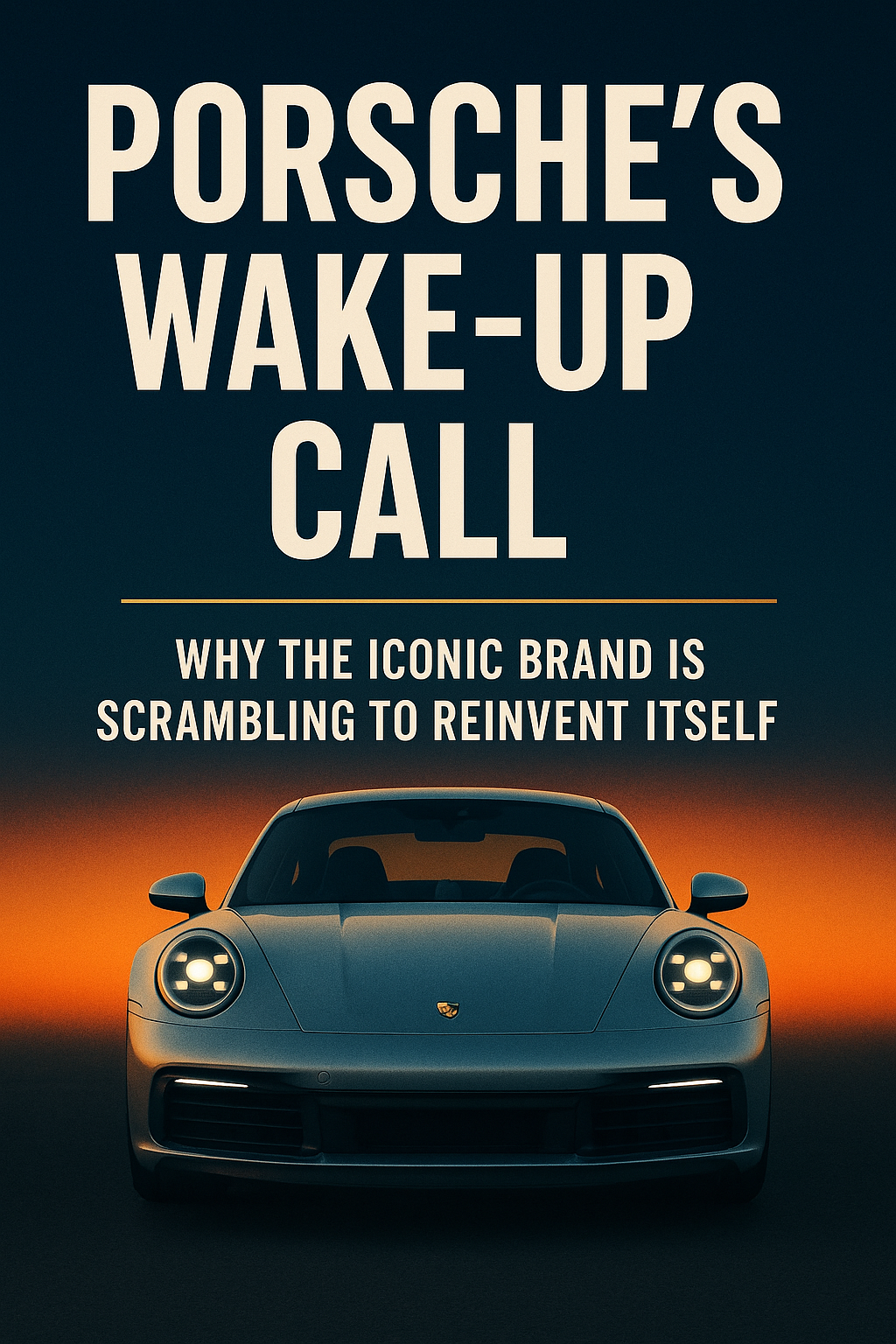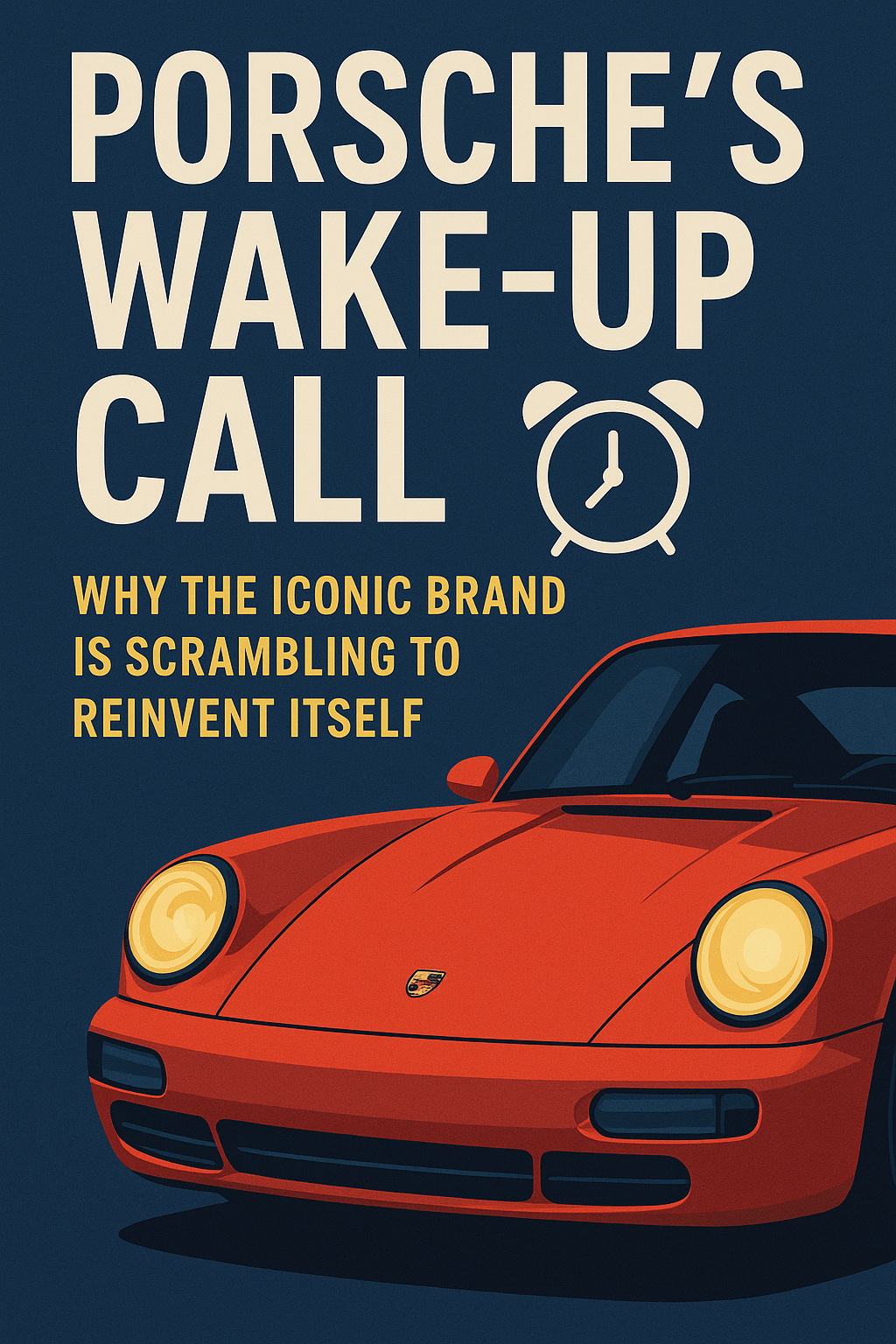Wake‑Up Call in Stuttgart: Why Porsche’s Profits and Prestige Are Under Threat
Porsche delivered 146,000 cars globally in H1 2025—a 6 percent drop from the same period a year earlier—and saw revenue slip by 1.7 percent.-Rafael Benavente

Porsche’s Wake‑Up Call: Why the Iconic Brand Is Scrambling to Reinvent Itself
Introduction
For decades, Porsche has stood as the paragon of high‑margin performance and luxury. From the purebred 911 to the bestselling Cayenne SUV, the Stuttgart marque has delivered both driving thrills and profitable growth. Yet in mid‑2025, CEO Oliver Blume delivered a rare—and unsettling—dispatch to employees: “Our business model, which has served us well for many decades, no longer works in its current form” . In this blog, we unpack the data behind Porsche’s sudden downturn, explore the pitfalls of its electric‑vehicle (EV) pivot, and examine the cost‑cutting measures designed to preserve the brand’s future.
Slipping Sales and Shrinking Profits
Porsche delivered 146,000 cars globally in H1 2025—a 6 percent drop from the same period a year earlier—and saw revenue slip by 1.7 percent. Even more alarming was a 40 percent plunge in operating profit, cutting margins nearly in half from their historical 14 percent+ down to roughly 8 percent . For a luxury‑performance brand accustomed to premium pricing and rock‑solid returns, those figures ring alarm bells.
At its peak, Porsche was the world’s third‑most valuable automaker, trailing only Tesla and Toyota. But in 2025 alone, its share price fell by 29 percent. Investors who bought into Europe’s largest IPO since 2012 in September 2022 now sit on paper losses approaching 50 percent .
EV Strategy Hits a Wall
Porsche’s pivot to electrification has been rocky. The TYON EV flagship—hailed for its striking design and sporting dynamics—underperformed spectacularly. Laden with a hefty price tag, constrained by limited range, and now besieged by competition from legacy brands and Chinese startups, TYON sales plummeted 49 percent in 2024 and slid another 6 percent in H1 2025 .
Meanwhile, the electric Macan—intended as a volume driver—struggled to gain traction for over a year. Only recently did it overtake the internal‑combustion version, now accounting for 60 percent of Macan sales . That shift is encouraging, but Europe’s ban on gas‑powered Macans means Porsche has less wiggle room to tweak ICE variants or lean on traditional platforms in the region.
Crucially, Porsche officially abandoned its lofty goal of achieving 80 percent EV mix by 2030—admitting internally that the target “is not realistic anymore” .
Global Market Shifts
China, once Porsche’s cash cow, is no longer firing on all cylinders. In 2021, Chinese buyers accounted for nearly a third of global deliveries (95,000 cars). By mid‑2024, China sales were down 15 percent, and that decline has persisted through 2025—even affecting staple models like the 911 . Local consumers are gravitating toward homegrown EV brands, undermining Porsche’s premium import appeal.
In contrast, North America remains relatively resilient: deliveries ticked up 1 percent in 2024 and jumped 10 percent in H1 2025. But even there, repeated price hikes (two already in 2025) threaten to erode demand if economic headwinds deepen .
Cost‑Cutting as Survival Strategy
Faced with eroding margins and strained cash flow, Porsche launched an aggressive cost‑reduction program aiming to save €4–5 billion by 2030 through:
- Simplifying product complexity to reduce engineering and production costs
- Consolidating R&D platforms, prioritizing flexible architectures that underpin multiple models
- Slashing about 3,900 jobs by 2029 to reflect a leaner output target of 250,000 cars annually versus the 311,000 delivered in 2024 .
This represents a historic pivot from growth‑oriented investments to belt‑tightening measures—an unfamiliar posture for a brand long obsessed with expanding its model lineup.
Identity Crisis: What Is Porsche Today?
Porsche’s core identity has always centered on two poles: the visceral thrill of the 911 and the pragmatic SUV profits of the Cayenne and Macan. Now, with hybrid sedans, electric SUVs, and an EV coupe all in various stages of development—with uncertain launch timelines—Porsche risks diluting its essence .
The imminent discontinuation of the gas‑powered 718 Boxster and Cayman—without immediate EV replacements—deepens the anxiety for purists. Enthusiasts worry that no electric successor can match the sound, responsiveness, and emotional resonance of Porsche’s mid‑engine roadsters.
The Road Ahead: Can Porsche Bounce Back?
Porsche is by no means on the brink of collapse—but it is vulnerable. To preserve its storied brand, it must:
- Deliver on EV Experience: Next‑gen TYON and Cayenne EV launches must marry performance and range in ways that justify Porsche’s premium pricing.
- Reignite Enthusiast Passion: Limited‑edition ICE and hybrid models could serve as stopgaps, reminding fans of the marque’s heritage while EV tech matures.
- Stabilize Global Sales Mix: Finding new growth pockets—whether through tailored Chinese partnerships, subscription models, or emerging markets—can offset declines in core regions.
Success isn’t guaranteed. But with disciplined cost controls, a coherent EV roadmap, and a recommitment to its driving‑first DNA, Porsche can transform this “wake‑up call” into a renaissance.
Credits & Acknowledgments
This blog draws on the Carfax YouTube analysis and its accompanying Tactiq transcript (tactiq-free-transcript-V3V0Cn1r8Nc.txt) to ensure factual accuracy . Special thanks to the Carfax channel for its insightful breakdown of Porsche’s current challenges—and to the broader community of automotive writers and enthusiasts who continue to hold this legendary brand to the highest standards.

By Rafael Benavente
